Engineering Systems in Continuous and Discrete Time
1 Crore+ students have signed up on EduRev. Have you?
Properties of Signals
A signal can be classified as periodic or aperiodic; discrete or continuous time; discrete of continuous-valued; or as a power or energy signal. The following defines each of these terms. In addition, the signal-to-noise ratio of a signal corrupted by noise is defined.
Periodic / Aperiodic:
A periodic signal repeats itself at regular intervals. In general, any signal x(t) for which for all t is said to be periodic.
The fundamental period of the signal is the minimum positive, non-zero value of T for which above equation is satisfied. If a signal is not periodic, then it is aperiodic.
Symmetric / Asymmetric:
There are two types of signal symmetry: odd and even. A signal x(t) has odd symmetry if and only if x(-t) = -x(t) for all t. It has even symmetry if and only if x(-t) = x(t).
Continuous and Discrete Signals and Systems
A continuous signal is a mathematical function of an independent variable, which represents a set of real numbers. It is required that signals are uniquely defined in except for a finite number of points.
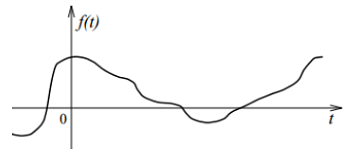
- A continuous time signal is one which is defined for all values of time. A continuous time signal does not need to be continuous (in the mathematical sense) at all points in time. A continuous-time signal contains values for all real numbers along the X-axis. It is denoted by x(t).
- Basically, the Signals are detectable quantities which are used to convey some information about time-varying physical phenomena. some examples of signals are human speech, temperature, pressure, and stock prices.
- Electrical signals, normally expressed in the form of voltage or current waveforms, they are some of the easiest signals to generate and process.
Example: A rectangular wave is discontinuous at several points but it is continuous time signal.
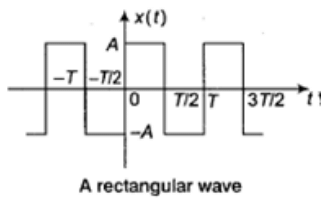
Discrete / Continuous-Time Signals:
A continuous time signal is defined for all values of t. A discrete time signal is only defined for discrete values of t = ..., t-1, t0, t1, ..., tn, tn+1, tn+2, ... It is uncommon for the spacing between tn and tn+1 to change with n. The spacing is most often some constant value referred to as the sampling rate,
Ts = tn+1 - tn.
It is convenient to express discrete time signals as x(nTs)= x[n].
That is, if x(t) is a continuous-time signal, then x[n] can be considered as the nth sample of x(t).
Sampling of a continuous-time signal x(t) to yield the discrete-time signal x[n] is an important step in the process of digitizing a signal.
Energy and Power Signal:
When the strength of a signal is measured, it is usually the signal power or signal energy that is of interest.
The signal power of x(t) is defined as

and the signal energy as

Signal to Noise Ratio:
Any measurement of a signal necessarily contains some random noise in addition to the signal. In the case of additive noise, the measurement is
x(t) = s(t)+n(t)
where s(t) is the signal component and n(t) is the noise component.
The signal to noise ratio is defined as

or in decibels, 
The signal to noise ratio is an indication of how much noise is contained in a measurement.
Standard Continuous Time Signals
- Impulse Signal

where ∞ is the hight of impulse signal havig unit area.
and  When A = 1 (unit impulse Area)
When A = 1 (unit impulse Area)
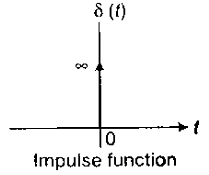
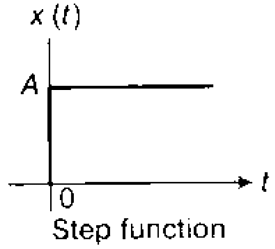
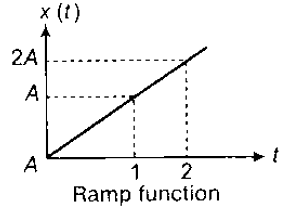
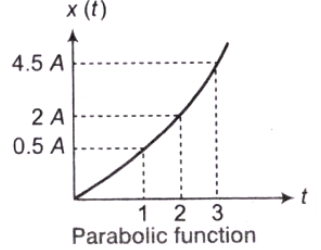
- Unit Pulse Signal
x(t) = π(t)
= u(t + 1/2) - u(t - 1/2)

Sinusoidal Signal
Important points:
- The sinusoidal and complex exponential signals are always periodic.
- The sum of two periodic signals is also periodic if the ratio of their fundamental periods is a rational number.
- Ideally, an impulse signal is a signal with infinite magnitude and zero duration.
- Practically, an impulse signal is a signal with large magnitude and short duration.
Classification of Continuous Time Signal: The continuous time signal can be classified as
1. Deterministic and Non-deterministic Signals:
- The signal that can be completely specified by a mathematical equation is called a deterministic signal. The step, ramp, exponential and sinusoidal signals are examples of deterministic signals.
- The signal whose characteristics are random in nature is called a non-deterministic signal. The noise signal from various sources like electronic amplifiers, oscillator etc., are examples of non-deterministic signals.
- Periodic and Non-periodic Signals
- A periodic signal will have a definite pattern that repeats again and again over a certain period of time.
x(t+T) = x(t)
2. Symmetric (even) and Anti-symmetric (odd) Signals
When a signal exhibits symmetry with respect to t = 0, then it is called an even signal.
x(-t) = x(t)
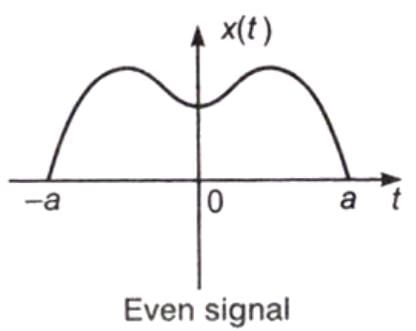
When a signal exhibits anti-symmetry with respect to t = 0, then it is called an odd signal.
x(-t) = -x(t)
Let X(t) = Xe(t) + X0(t)
Where, Xe(t) = even part of X(t)
X0(t) = odd part of X(t)

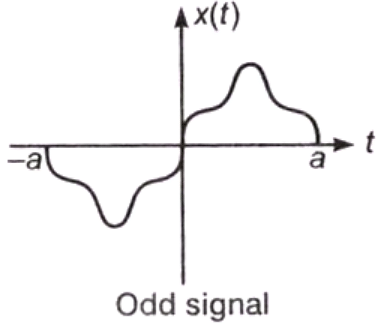
Discrete-Time Signals
The discrete signal is a function of a discrete independent variable. In a discrete time signal, the value of discrete time signal and the independent variable time are discrete. The digital signal is same as discrete signal except that the magnitude of the signal is quantized. Basically, discrete time signals can be obtained by sampling a continuous-time signal. It is denoted as x(n).

Standard Discrete Time Signals
Source: https://edurev.in/studytube/Representation-of-Continuous-Discrete--Time-Signal/a72d6db0-4d70-4691-b429-4b1bb07dfc74_t
0 Response to "Engineering Systems in Continuous and Discrete Time"
Post a Comment